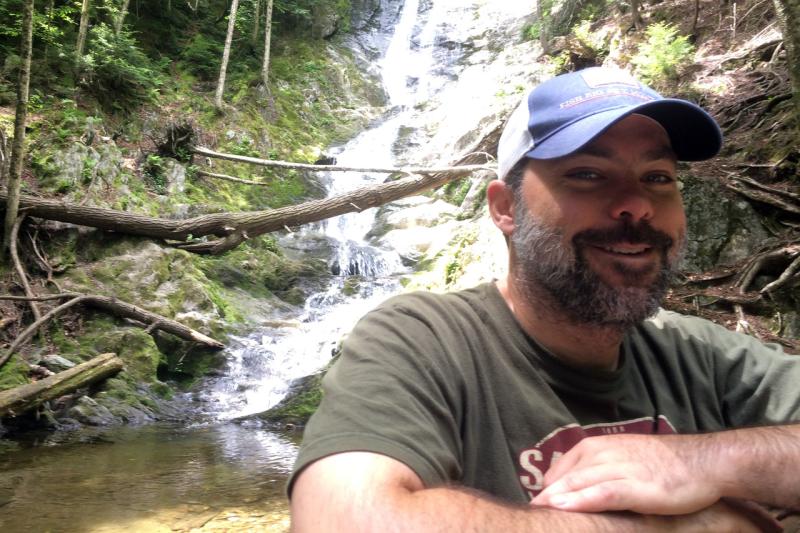National Fish Passage Engineer Bjorn Lake has worked with NOAA for five years. He currently works at the Northeast Fisheries Science Center in Woods Hole, Massachusetts.
Describe a project related to habitat that you’re currently working on that you enjoy.
On the Pee Dee River in North Carolina, NOAA Fisheries is working with Duke Energy to improve fish passage at the Blewett Falls hydroelectric dam. The project aims to improve access to hundreds of miles of spawning and rearing habitat for American shad, Blueback herring, and American eel. In recent years, I’ve enjoyed working with partners to design the fish passage facilities. This year, Duke Energy has broken ground on the fish passage project that will take multiple years to construct.
It’s also been exciting to work at Blewett Falls, which has been in operation for more than 100 years. It was inducted into the Hydro Hall of Fame in 2018. Duke Energy is not only investing in fish passage facilities, they are also constructing upgrades. Hopefully that will allow the facility to produce renewable energy for another 100 years, while mitigating impacts on migratory fish.
Across the country, hydroelectric infrastructure is ageing and was originally constructed without accounting for migratory fish. If we can successfully upgrade the Blewett Falls dam, it gives me hope that we can repeat this process at other facilities. That would mean we could have robust migratory fish populations and a strong renewable energy sector.
What habitat work has been especially successful or inspiring to you?
As a fish passage engineer, for me it’s all about providing access for migratory fish to their spawning and rearing habitats. I spend my days designing new fish passage facilities, retrofitting old facilities, or inspecting operating fishways. The pride and joy I feel seeing fish reach their spawning grounds and increasing their populations is the highlight of my profession. Each diadromous fish that passes a barrier is a success story that leads to healthier stocks for our nation’s commercial and recreational fishery.
Describe a time when you were surprised by fish and/or habitat.
Many years ago, my wife and I drove to Mount Desert Island off the coast of Maine. We were looking at small fishways that provide access for migrating alewives to their spawning habitat in ponds and lakes. On the southern end of the island, there is a short stream that connects Seal Cove to a pond. In this stream there are two barriers that block alewife from their spawning habitat. The first is a rocky slope that is approximately 8 feet tall and nearly vertical. At the base of the rocky slope, we saw thousands of adult alewives in a pool patiently waiting their turn to make an attempt at getting over the barrier. Based on standard engineering criteria and guidelines, none of these fish should be able to pass over this barrier—the water was too fast and shallow. As expected, most attempts failed, yet the fish kept trying, one at a time, over and over again. After watching for a while, we saw a couple fish make it over the barrier after dozens of attempts. Once they got over the rocky slope, the next barrier was a small dam at the outlet of the pond which was retrofitted with a fishway. Unfortunately, the day we visited, the fishway was not operational and the alewife were not entering and passing to the pond. However, the water was high enough in the pond that it flowed over a portion of the dam. Sure enough, we saw alewives turn onto their side and accelerate through the thin sheet of water over the rocks and into the pond. I was amazed by the determination of these little fish! Their resiliency in the face of obstacles both natural and human-made is inspiring.
What person has expanded your understanding or connection to habitat?
There is no one person; there are many. To complete a successful fish passage project you need engineers who understand design and physics, and biologists who understand the fish. You also need managers who can facilitate effective communication between all parties involved. With each fish passage project, I gain a better understanding of the value of habitat and what it means for healthy, productive, and valuable fisheries stocks.



